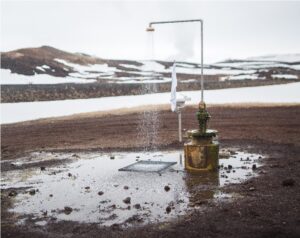One of the most common questions I get about cold exposure is whether it is a good idea to take a cold shower (or ice bath) after a workout.
It’s really convenient to just jump into a cold shower after finishing training – but is it hindering your progress?
After reviewing the studies and evidence, the answer is: it depends on your workout, your shower, and your goals!
Cold Water and Hypertrophy
When training to build muscle – e.g. calisthenics, weightlifting or sprinting – the strength exercises temporarily damage the muscles slightly, but in such a way that the body repairs them stronger.
There is a key window of around an hour after training when the body is very active producing hormones that are crucial for starting this process, and many athletes worry that cold showers or other cold exposure in this one-hour window will reduce the effectiveness of their workouts.
In fact this has been shown experimentally to be true in various studies. Strength training noticeably increases the volume of “fast twitch” muscle fibres and improves strength (we knew that!) but not when athletes bathed in cold water for 10 minutes soon after training.
Cold Showers after Workouts
Notice that the studies tested the effect of 10 minutes of cold water immersion – and not of a cold shower! The “cold dose” of a typical cold shower is typically much less than a 10 minute ice bath, so it might have a less dramatic impact on muscle gains.
For now there doesn’t seem to be any studies that deal with cold showers, but many athletes report that they usually take cold showers after their workouts, and they are happy with their strength improvement. However, we don’t know whether they are missing out on any greater gains.
Cold Exposure when not Building Muscle
For types of training that are not designed to quickly build muscle – such as cardio, endurance cycling, swimming, yoga, skill training or team sports practice – the concerns above are not relevant. So there should be no problem in doing cold exposure after e.g. a 30 minutes cycling workout.
In fact cold training is also a good workout for the cardiovascular system, and could complement a cardio workout well.

Cold Exposure for Recovery
Ice baths and cold showers have traditionally been used by many athletes to improve recovery time – for example if they are performing in a multi-day competition and want to recover after each day’s activity.
In these cases, clearly strength gains are not an immediate concern, so even if the cold bath would reduce hypertrophy, it is not a concern for the athlete compared to the advantages of recovering faster.
Conclusion
If your workout is for quickly increasing strength – e.g. calisthenics, weightlifting or sprinting – then it’s best to wait more than an hour before cold exposure, or do them a completely different time. If you do any cold exposure so soon after training, then best to keep it light (e.g. 1 minute cold shower rather than 10 minutes ice bath).
If it’s not important to you whether your workout quickly builds strength – such as cardio, endurance cycling, swimming, yoga, etc. – or if you need to recover quickly, then there’s no need to worry about taking cold showers or ice baths at any time after training.
Further Information
To read about the main benefits of cold showers and ice baths, here I summarize 12 major effects and the Biology behind them.
To read more detailed scientific information about the effects of cold training on the body, I recommend Rhonda Patrick’s work.
If you’re thinking of making an ice bath, you can use this tool to find out how much ice you will need.